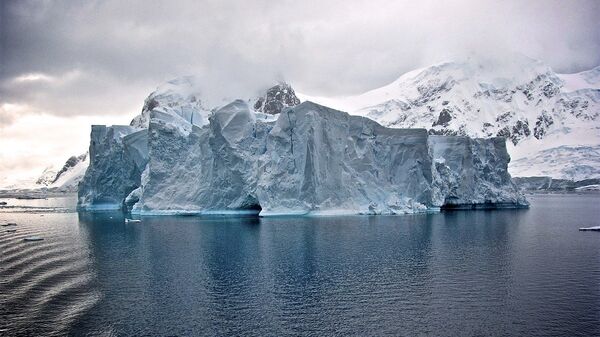While studying the vast snowy lands of Antarctica, a group of researchers from the UK, Denmark, the Netherlands and Norway have come across three canyons hidden right in the heart of the region.
Scientists.
— Sam Neill (@TwoPaddocks) 24 мая 2018 г.
Antarctica. What a place. #Uncharted #ThePacific @AusAntarctic
[ one of my favourite shots from last year ] pic.twitter.com/fyknadk82f
Where the winter Sun is still rising in #Antarctica (just!) is Mawson Station, latitude 67°36′South; its relatively brief polar night lasts for two weeks over the June solstice. This photo of the dawn sky this morning by Nick Cullen @AusAntarctic pic.twitter.com/duJ0bwBbKl
— The Antarctic Report (@AntarcticReport) 22 мая 2018 г.
According to the journal Geophysical Research Letters, where they published their findings, the canyons lie on the borderline between the East and West Antarctic ice sheets, and they essentially direct ice flow to the sea, when the two sheets approximate each other. Given the drastic climatic change predicted for the region, there are fears that the troughs will speed up to a great extent ice streaming towards the sea, thereby causing an abrupt rise in sea level.
"That makes the canyons really important, and we simply didn’t know they existed before now," Kate Winter, a researcher at Northumbria University in the UK and the lead author of the paper, told the BBC.
#OnLocation in majestic #Antarctica as @CliffDiving star @OrlandoDuque launches off an iceberg to raise awareness on #climatechange https://t.co/VKZkXAyUoN pic.twitter.com/T3wju6Cr0D
— RedBullContentPool (@RBContentPool) 24 мая 2018 г.
The largest one, which goes by the suggestive name Foundation Trough, stretches for roughly 217 miles and is 22 miles wide.
Scientists think someone is making a banned chemical that destroys the ozone layer, but they're not exactly sure where it's being produced.
— AJ+ (@ajplus) 17 мая 2018 г.
Chlorofluorocarbons were banned in the 1980s after an ozone hole was discovered over Antarctica. pic.twitter.com/KBdQD64aX7
READ MORE: What's in Store For the Planet? Professor's Take on Staggering Carbon Levels
What appears to be most disturbing, temperatures are already reported to be rising, disrupting naturally occurring ice shelves and propelling the Antarctic ice sheets from their rims, sending massive melted ice flows towards the sea.
The research is part of the wider PolarGAP project launched by the European Space Agency to monitor areas of the planet that its satellites can’t catch sight of.



